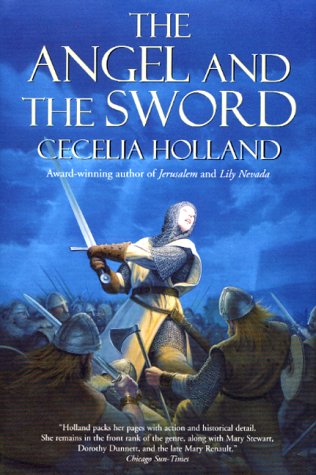The Angel and the Sword
The dark and bloody pathways and streets of ninth century France are the backdrop against which Holland retells the traditional French story of Roderick the Beardless. So intent is Ragny, the daughter of the King of Spain, to escape her father’s ravishment after the death of her mother that Ragny leaves everything she has known. In the midst of Ragny’s escape, she convinces her father’s steward, Seffrid, to join her.
Ragny becomes Roderick, a young prince, and only Seffrid knows her to be a woman. So quickly does Roderick learn to be a man, so empowered with a light from heaven and so filled with good, that Seffrid becomes her stalwart companion and teacher. When Roderick and Seffrid are set upon by robbers, Roderick seems to have the power of many men at once, his sword arm imbued with the power of the Almighty. So Roderick’s legend grows.
Finally, the band of travelers which Roderick and Seffrid have joined reaches Paris. Besieged by Northmen, living in a virtual shanty-town from which the only egress is by escape or death, Parisians live in a constant state of fear. Their king, Charles the Bald, grandson of Charlemagne, is an ineffectual ruler trying desperately to preserve the last remnants of the empire. Enter Roderick who masses the troops, builds confidence and reaches a detente with the Northmen.
But Roderick is not a man, but, indeed, Ragny, a young woman who has lost virtually all her femininity. It is within the secondary plot – Ragny’s fate as a woman — that Holland truly excels. Although I have always found Holland, a remarkably versatile historical novelist, to be a fairly pedestrian writer, the depth of Ragny’s solitude and pain is palpable. In many ways, that solitude and pain is mirrored in the character of King Charles. These two characters alone make the read worthwhile, although the prose is not adorned or embellished in any way.
There is much of historical interest here as well – the panic-driven Parisians and their fear of the Northmen, the beginnings of true adherence to the Faith and the meaningful part the Church played in the lives of the people and particularly, in Ragny, the sense of the mystical and inexplicable. This is a book well worth the read.










